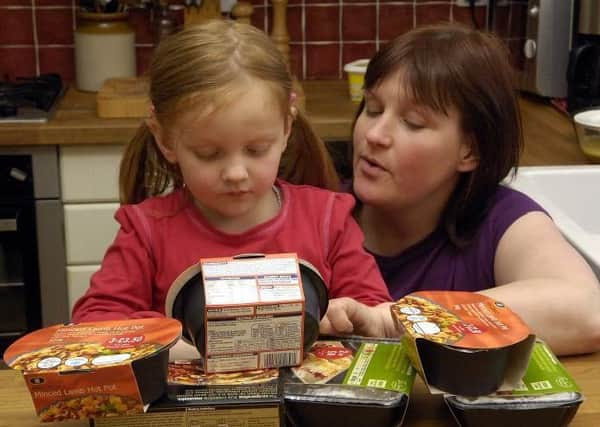We're cooking up a healthier Scotland by making a meal of nutritional info


FDF Scotland and our members take the health of the Scottish people very seriously, particularly in relation to rising obesity levels. Obesity is a complicated issue and there is no easy solution. Food and drink companies want to be part of the solution and are working with government and other stakeholders to limit portion sizes, reformulate products and educate consumers about the food they are eating.
Educating consumers is a key way we can help improve the health of the nation. Rather than telling people what to eat and not to eat, we can arm them with the knowledge they need to make their own choices. For well over a decade UK food manufacturers have led the world in providing nutrition information on pack. Food and drink companies have a legal obligation to tell their customers what is in their food, and ingredients lists and nutrition information are both clearly provided on pack. However, many go much further by providing a simplified version of nutrition information on the front of pack, sometimes with red, amber and green colour coding. This means consumers can easily check, compare and choose foods based on their nutritional characteristics.
Advertisement
Hide AdAdvertisement
Hide AdFDF has created resources to help people understand food labels. This includes a booklet for healthcare professionals to enable them to help their patients use food labels with confidence. The booklet has been downloaded more than 25,000 times and 12,000 hard copies were given away for free. Building on this work, we launched a labelling website for consumers which receives approximately 11,400 hits a month.


There was a demand from education professionals for a similar resource that could be used in the classroom. So as part of our schools work in Scotland – A Future in Food – we launched a new toolkit that can be used to teach students to read ingredients lists and understand nutrition information. This resource could have a much wider reach than just the classroom and be used by anyone who wants to better understand food labels.
Food education is an important way to help young people understand where their food comes from and how it is produced. A Future in Food, which is supported by the Scottish Government, does just that through active engagement with food and drink companies from across the supply chain. Teachers, pupils and parents also gain a better understanding of the wide variety of careers the industry has to offer and how to access jobs.
Part of this involves creating and supporting long-term partnerships between schools and food and drink companies. For example, Angus-based seed potato company Agrico UK works with nearby Glamis and Eassie Primary Schools as part of the company’s award winning project, Tattie Tastic. Primary 6-7 pupils take part in site visits at which they meet the staff, finding out what their different roles involve and learning all about potatoes and the journey they make from farm to fork. The pupils then have the chance to plant, grow, harvest and cook their own potatoes as well as designing and developing marketing campaigns.
In another example, Uncle Ben’s global initiative Ben’s Beginners aims to get children and families cooking together and having fun while developing a good relationship with food. In the UK this is delivered through a series of free online cooking lessons, with recipes including nutritional information, tutorials and fun facts. The company also has a MealMakerweb page offering healthy recipes.


Our industry is already taking part in many positive initiatives to help improve the health of the nation. But we stand ready to do more, which is why FDF Scotland is working closely with the Scottish Government, Food Standards Scotland and industry partners to find the best way to improve the Scottish diet.
David Thomson, CEO of Food and Drink Federation (FDF) Scotland